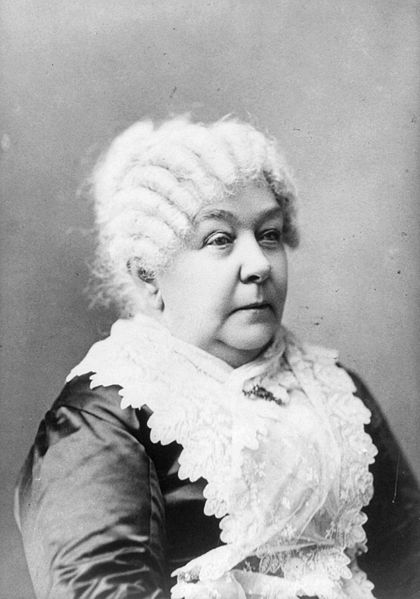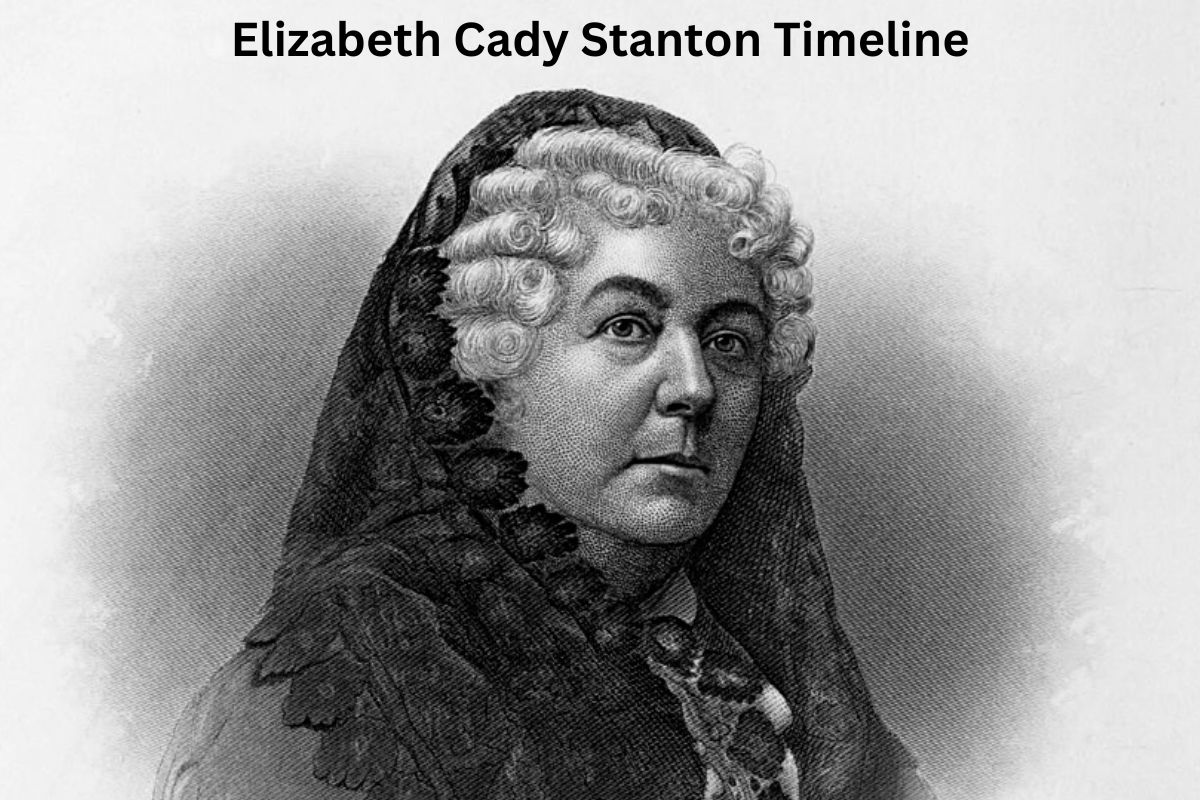Elizabeth Cady Stanton was a trailblazing American suffragist and women’s rights advocate. Her timeline spans from her birth in 1815 to her passing in 1902.
Stanton’s activism and leadership played a pivotal role in advancing the cause of women’s rights in the United States. She co-organized the historic Seneca Falls Convention in 1848, which marked the beginning of the women’s rights movement.
Stanton’s partnership with Susan B. Anthony further propelled the fight for women’s suffrage, and she co-founded the National Woman Suffrage Association (NWSA).
Stanton’s legacy includes her influential writings, such as the controversial “Woman’s Bible,” and her tireless efforts to challenge societal norms and advocate for gender equality.
Her contributions laid the groundwork for future generations of women to secure voting rights and equal opportunities.
| Year | Event |
|---|---|
| 1815 | Elizabeth Cady Stanton is born in Johnstown, New York. |
| 1831 | Attends the Troy Female Seminary. |
| 1840 | Marries Henry Brewster Stanton. |
| 1848 | Helps organize the Seneca Falls Convention. |
| 1851 | Meets Susan B. Anthony. |
| 1869 | Co-founds the National Woman Suffrage Association (NWSA). |
| 1878 | Writes the “Woman’s Bible.” |
| 1890 | NWSA merges with the AWSA to form the National American Woman Suffrage Association (NAWSA). |
| 1902 | Elizabeth Cady Stanton passes away in New York City. |
| 1920 | The Nineteenth Amendment is ratified, granting women the right to vote. |
Timeline of Elizabeth Cady Stanton
1815 – Elizabeth Cady Stanton is born in Johnstown, New York
She was raised in a family committed to social justice and education. Her father, Daniel Cady, was a prominent attorney and judge, and her mother, Margaret Livingston Cady, encouraged her daughter’s intellectual development.
Growing up, Stanton was exposed to discussions on politics, law, and equality, which influenced her later activism.

1831 – Stanton attends the Troy Female Seminary
In 1831, Stanton enrolled in the Troy Female Seminary, an innovative institution that provided advanced education to young women.
Also Read: Elizabeth Cady Stanton Accomplishments
The seminary emphasized academic subjects like mathematics, science, and literature, which expanded Stanton’s intellectual horizons and fueled her passion for women’s rights.
Her time at the seminary played a crucial role in shaping her feminist ideals and instilling in her a belief in women’s intellectual and social equality.
1840 – She marries Henry Brewster Stanton
In 1840, Elizabeth Cady Stanton married Henry Brewster Stanton, a lawyer and abolitionist. Their union was considered unconventional for the time, as Stanton insisted on including in her marriage vows a declaration that she would retain her legal rights and independence.
This partnership provided Stanton with a supportive husband who shared her progressive views and encouraged her activism.
Also Read: Elizabeth Cady Stanton Facts
Stanton’s marriage to Henry deepened her involvement in social causes and laid the foundation for her future contributions to the women’s rights movement.
1848 – Stanton helps organize the Seneca Falls Convention
In 1848, Elizabeth Cady Stanton played a pivotal role in organizing the historic Seneca Falls Convention.
Alongside Lucretia Mott and other women’s rights activists, Stanton co-wrote the Declaration of Sentiments, which outlined the injustices faced by women and demanded equal rights.
The convention, held in Seneca Falls, New York, was the first of its kind in the United States and marked a significant milestone in the women’s rights movement. The Seneca Falls Convention became a catalyst for future activism and laid the foundation for the demand for women’s suffrage.
1851 – Stanton meets Susan B. Anthony
In 1851, Stanton met Susan B. Anthony, marking the beginning of a lifelong partnership and collaboration in the fight for women’s rights. Anthony, a fellow suffragist and social reformer, shared Stanton’s passion for women’s suffrage and gender equality.
Together, they worked tirelessly to advance the cause of women’s rights, organizing conventions, delivering speeches, and writing extensively on the subject.
Stanton’s intellectual prowess and Anthony’s strategic acumen complemented each other, making them a formidable team in the pursuit of women’s suffrage.
1869 – She co-founds the National Woman Suffrage Association (NWSA)
In 1869, Stanton co-founded the National Woman Suffrage Association (NWSA) along with Susan B. Anthony. The primary focus of the NWSA was to secure voting rights for women at both the state and federal levels.
Stanton was elected as the first president of the organization. The NWSA advocated for a broad range of women’s rights beyond suffrage, including divorce reform, employment opportunities, and equal pay.
Stanton’s leadership and articulate arguments played a critical role in advancing the suffrage movement and gaining visibility for women’s rights causes.
1878 – Stanton writes the “Woman’s Bible”
In 1878, Elizabeth Cady Stanton published her controversial work, the “Woman’s Bible.” This two-volume publication was a critique of the patriarchal interpretations of the Bible and its impact on women’s rights.
Stanton argued that religious texts had been used to justify the subjugation of women throughout history. The “Woman’s Bible” challenged traditional religious interpretations and sought to empower women by offering alternative perspectives on biblical passages.
While the book faced significant criticism, it sparked important discussions about the role of religion in perpetuating gender inequality.
1890 – The NWSA merges with the AWSA to form the National American Woman Suffrage Association (NAWSA), with Stanton as the first president
In 1890, the National Woman Suffrage Association (NWSA), co-founded by Stanton, merged with the American Woman Suffrage Association (AWSA) to form the National American Woman Suffrage Association (NAWSA).
The merger was an important strategic move to consolidate resources and efforts in the fight for women’s suffrage. Stanton, despite declining health, continued to contribute her insights and experience to the cause, although she stepped down as president of the organization.
1902 – Stanton passes away in New York City
On October 26, 1902, Elizabeth Cady Stanton passed away in New York City at the age of 86. Her death marked the end of an era and a significant loss for the women’s rights movement.
Stanton’s relentless advocacy, eloquent speeches, and groundbreaking writings had made her a revered figure in the fight for women’s suffrage and gender equality.
Her passing left a void but also served as a reminder of her enduring legacy and the ongoing struggle for women’s rights.
1920 – The Nineteenth Amendment is ratified, granting women the right to vote
On October 26, 1902, Elizabeth Cady Stanton passed away in New York City at the age of 86. Her death marked the end of an era and a significant loss for the women’s rights movement.
Stanton’s relentless advocacy, eloquent speeches, and groundbreaking writings had made her a revered figure in the fight for women’s suffrage and gender equality.
Her passing left a void but also served as a reminder of her enduring legacy and the ongoing struggle for women’s rights.
